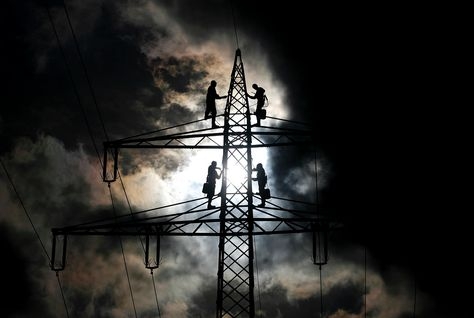The Abu Dhabi Executive Council recently approved the building of a 10th independent water and power project (IWPP). The increased capacity this new facility will bring is expected to help the emirate meet its rising demand for utilities.
The latest IWPP will be built at Mirfa, about 160 km from Abu Dhabi City. The new facility, which is planned to have a power generation capacity of 1500 MW and be able to produce up to 60m gallons per day (gpd) of water, will be in addition to older power and water stations that are currently located at Mirfa. It has not been made public whether these existing facilities will continue to operate once the new IWPP is up and running, but it seems likely that the relatively new desalination plant with a capacity of some 21m gpd will be retained, as it is only around 10 years old.
The proposed IWPP at Mirfa would expand Abu Dhabi’s peak capacity for electricity, which currently stands at 13,849 MW according to the Abu Dhabi Water and Electricity Company (ADWEC), by about 10%. In 2011 peak demand reached 9749 MW, leaving a comfortable cushion between supply and demand. However, usage is expected to grow in coming years, with demand increasing by 13.6% per year between 2011 and 2015, according to base case calculations prepared by ADWEC. This rise in demand is in part due to increasing exports to the Northern Emirates, as well as increasing usage by the Abu Dhabi National Oil Company.
Abu Dhabi relies almost exclusively on IWPPs for its water and power generation, with the existing facility at Mirfa the only non-IWPP supplier currently on-line. Indeed, independent producers account for more than 95% of water and power capacity. While IWPPs are common in the Gulf region, Abu Dhabi was responsible for the first in the region, tendered in 1998, and it continues to be a major champion of the model.
Mirfa will be the first IWPP that Abu Dhabi has put out to bid since the Shuweihat 3 electricity project was awarded to a consortium of Japan’s Sumitomo Corporation and the Korean Electricity Power Corporation. The IWPP bidding process is managed by the Abu Dhabi Water and Electricity Authority (ADWEA), a government entity that is responsible for the supply of electricity and water to the emirate. ADWEA handles the pre-qualification process for bidders, the issuance of requests for proposals and selection of the successful bidder.
For greenfield IWPP projects, the primary criterion for a winning bid is the average price at which the independent producer will supply electricity and water to ADWEC, the single buyer of power and water in the emirate. ADWEC and the winning bidder then enter into a long-term purchase agreement (typically 20 years) that has two main payment components: capacity and output. The former covers the fixed costs of the plant and is paid regardless of whether or not the plant is producing, while the latter pays for the variable costs incurred when the plant is actually producing electricity or water.
If structured like all of the other IWPPs in the emirate, the project at Mirfa will be established as a joint stock company that is 40% owned by the successful bidder, with the remaining 60% held by a local holding company set up by ADWEA. In turn, the local holding company may be 10% owned by ADWEA and 90% owned by the Abu Dhabi National Energy Company (TAQA), a publicly listed entity that is 51% itself owned by ADWEA, which has been the model to date.
According to Nick Carter, the director-general of the Regulation and Supervision Bureau, the independent regulatory authority established in 1999 to ensure the availability of potable water and electricity for the population, Abu Dhabi’s IWPPs are an attractive investment for several reasons. Firstly, the output is purchased by a single buyer (ADWEC), under a long-term contract, which ensures secure cash flow. Secondly, the existing structure allows for a competitive bidding process with the establishment of a published tariff for a period of at least 20 years.
Furthermore, the bidding rules stipulate that any proposal must specify a supply price to ADWEC that will allow the shareholder to earn at least a 13% rate of return on equity, providing a minimum benchmark for all potential investors. This may sound high but the model means that the equity injection is relatively low compared with the loan amount of some 80% of the capital cost of the project.
This is, of course, one of the great advantages of this form of project finance, as the bulk of the financing to build comes from international lenders and not from the government. As such, the presence of an independent regulator is highly important to investors and lenders alike; the body provides assurance, given the fact that Abu Dhabi has successfully overseen the establishment of nine IWPPs over more than a decade.
As the economy of Abu Dhabi continues to grow and diversify, the demand for power and water will only rise. The emirate’s decision to support the development of IWPPs – which often can produce power and water more efficiently than their public sector counterparts – will likely help it meet this growing demand.
Oxford Business Group
27 June






















































